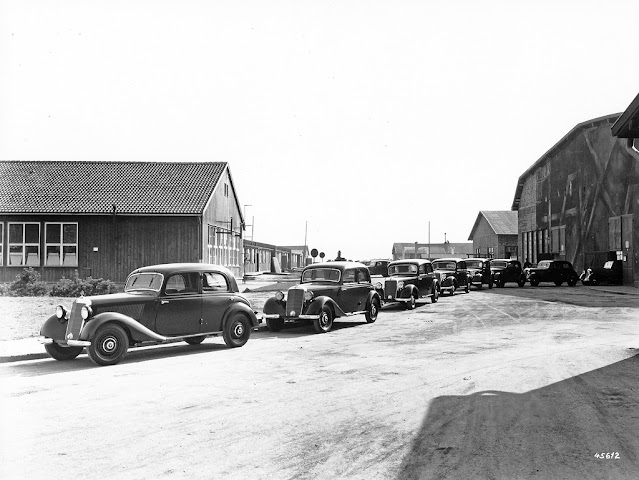- Reconstruction after the Second World War: In November 1945, the US occupation zone’s economic authority granted what was Daimler-Benz AG at the time permission to produce platform vehicles, panel vans and ambulances on the basis of the 170 V passenger car (W 136, originally presented in 1936). In May 1946, the first vehicle rolled off the final assembly production line at the Sindelfingen plant. Production continued until 1949. Production of the four-door saloon launched in July 1947. The image shows completed vehicles at the Sindelfingen plant. (Photo index number in the Mercedes-Benz Archives: 45612)
- Elegant silhouette with a local backdrop: Mercedes-Benz 170 V of the W 136 series, built from 1947 onwards. (Photo index number in the Mercedes-Benz Classic Archives: C29258)
- Originally launched in 1936, the W 136 series became a bestseller right from the start
It took courage, skill and organisational brilliance to start producing cars again after the end of the Second World War. Production facilities had been destroyed and materials were scarce. Mercedes-Benz took the first step quickly and from May 1946 initially produced urgently needed platform trucks and ambulances based on the 170 V (W 136). A good year later, things were proceeding: from July 1947, the company resumed production of the four-door saloon – an important signal of further normality. The vehicle was the only passenger car model in the Mercedes-Benz model range until 1949. Even before the war, this predecessor of the E-Class, presented in 1936, was a great success: the technically advanced and visually modern saloon was the brand’s most successful passenger car up to that point. A total of 140,415 units of the 170 V were produced.







Like I always said that "Old is Gold" man you can't beat the cars of that era like it's something special in it and the most important thing is that their engines were original and they have the strongest engine that nowadays doesn't exist.
ReplyDelete